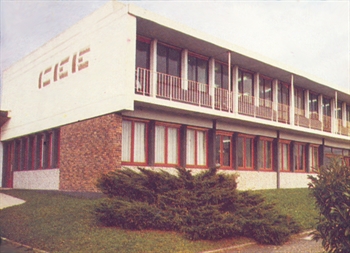Why Single-Function Relays Aren't Dead Yet
Protection relays of one sort or another have been in existence for over 100 years. For the first half-century of their development these were almost exclusively electro-mechanical devices which were vulnerable to mechanical wear, dirt ingress and variations in temperature and humidity. The next milestone in relay development was the analogue electronic relay; single-function devices designed to replace electromechanical relays but with much less onerous maintenance requirements (sometimes referred to as “static” relays). This is where our story starts.
CEE was founded in 1964 to produce single-function electronic relays; the development of these products culminated in the 7000 series, many of which are still manufactured today.
Microprocessor-based relays are often considered the successors to static relays; they have many advantages, not the least of which is a significant reduction in size by combining many protection functions into a single component.
More advanced microprocessor relays like the NP800 series can share measurements by communicating with a Supervisory Control And Data Acquisition (SCADA) system for centralised monitoring.
Microprocessor-based relays are often considered the successors to static relays; they have many advantages, not the least of which is a significant reduction in size by combining many protection functions into a single component.
More advanced microprocessor relays like the NP800 series can share measurements by communicating with a Supervisory Control And Data Acquisition (SCADA) system for centralised monitoring.

The most modern protection relays are considered “Smart” devices, of which the NP900 series is a perfect example. These have all the communication and protection functions of older microprocessor relays with added benefits such as remote programming, password-protected user access and automatic self-adjustment. Smart relays can adapt themselves to different network conditions; the NP900 series does this by programming up to 8 different protection setting groups, updating all internal calculations based on the real-time system frequency and storing disturbance information in COMmon format for TRAnsient Data Exchange (COMTRADE) format for later review. Smart devices are becoming very popular as a means of adapting power networks to changes in generation and demand with minimal human interference.

All of this history suggests that single-function static relays are no longer needed. However, CEE’s 7000 series relays have been earmarked for installation in several new distribution systems. Here’s why:
- Proven Service Life. Many of these relays have been in service for several decades with very little maintenance .
- Resilience. 7000 series relays are solidly built and can withstand significant mechanical impact as well as fluctuating temperatures. If required, they can be supplied with class E1 certification for protection against seismic damage.
- Security. Static relays cannot be remotely re-programmed and therefore cannot be “hacked” either via the internet or via malicious software uploaded locally.
- Visual verification . All built-in and user-defined relay settings are clearly visible from the faceplate of each 7000 series relay. It is simple to check how each device is configured and there are no electronic displays which could potentially fail in service.
- System recovery. 7000 series relays have minimal “warm-up time”; as soon as they are powered up, they are ready to operate.
- EMP. Because they contain no microprocessors, most 7000 series relays are very resilient to ElectroMagnetic Pulse (EMP) phenomena which are known to harm microchips.
At CEE we invite you to consider static relays for applications where smart devices may not be appropriate. These applications can include:
- Facilities where security is a concern, including civil and military installations.
- Distribution systems which are prone to rough treatment such as marine installations or areas of high seismic activity.
- Remote or inaccessible installations where there are limited/unreliable communications; historically these have included offshore applications and remote radar stations.
- Safety-critical installations, particularly in nuclear power plants where system failure could have potentially devastating consequences.
In summary, 7000 series static relays can remain in service under conditions that would cause more complex relays to fail. When you install a 7000 series relay, you are creating a legacy for your grandchildren*
*You can tell them about protection relays in the “good old days”